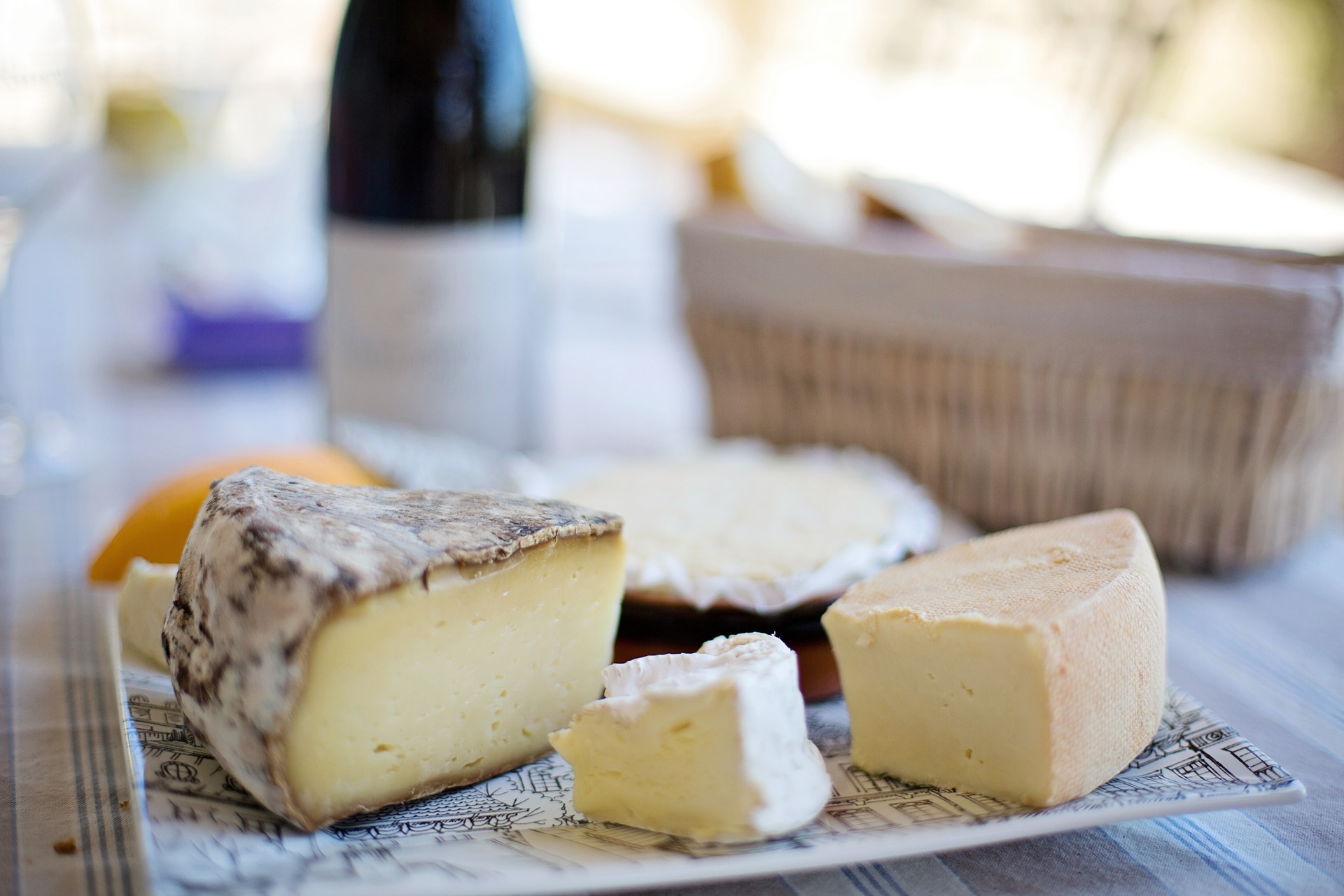One of my favorite parts of my job is introducing visitors to French cheeses. But while many people purport to love cheese, claiming “the stinkier, the better,” I often find that people don’t actually know what they like and, ultimately, end up disappointed.
The problem is that while French cheeses are often flavorful, not all French cheeses are stinky, assertive, or pungent in the same way. Some are salty; some are mushroomy; some are bitter; some are rich. The way to find the cheeses best suited to your palate is to think about cheeses that you already like and go from there, and with that in mind, I’ve created a cheat sheet of sorts to help you find French cheeses you’ll fall in love with.
The “Brie” Family
I’ve been surprised to find that a lot of Americans who think they like Brie actually don’t like Brie at all. The Brie we often get Stateside is muted and creamy in flavor, whereas true French Brie is quite pungent and earthy. It’s soft, but it’s not necessarily creamy – for that, you need to go to the double- and triple-cream bloomy rinded cheeses. Other soft and semi-soft cheeses, meanwhile, offer a range of different flavors as well, not to mention textures, but their lack of a famous name often means that they’re ignored.
So…
If you like rich, creamy flavors like Saint André or double- or triple-cream Brie, ask for:
- Chaource
- Brillat Savarin
If you like mushroomy flavors veering towards bitter, like Camembert, ask for:
- Brie de Melun
- Brie de Meaux
- Camembert de Normandie (be sure you’re getting raw milk [lait cru]!)
- Coulommiers
- Neufchatel
If you like soft or semi-soft cow’s milk cheeses with a slight pungency and depth of flavor like Taleggio, ask for:
- Morbier
- Mont d’Or
- Raclette
If you like pungent, sticky, stinky, orange-rinded cheeses like Red Hawk, ask for:
- Maroilles
- Livarot
- Epoisses
Hard Cheeses
Hard cheeses are not all created alike either. Most hard cheeses in France are sold based on how long they have been aged, with options ranging from three months to over three years. Aging a cheese longer promotes the formation of crystals, like in a good Parmesan, as well as a richness and a depth of flavor and even sweeter hazelnut, caramel, or toffee notes.
If you like nutty cow’s milk cheeses like Gruyère, ask for:
- Comté
- Abondance
- Beaufort
If you like rich, tangy cow’s milk cheeses like Cheddar, ask for:
- Cantal fermier
- Salers
If you like sharp ewe’s milk cheeses like Manchego, ask for:
- Napoléon
- Ossau-Iraty
- Tomme de brebis
Of course, this is just the tip of the iceberg when it comes to French cheese! There are hundreds and hundreds of cheeses to try in France, and I for one hope to someday say I’ve taste them all.
